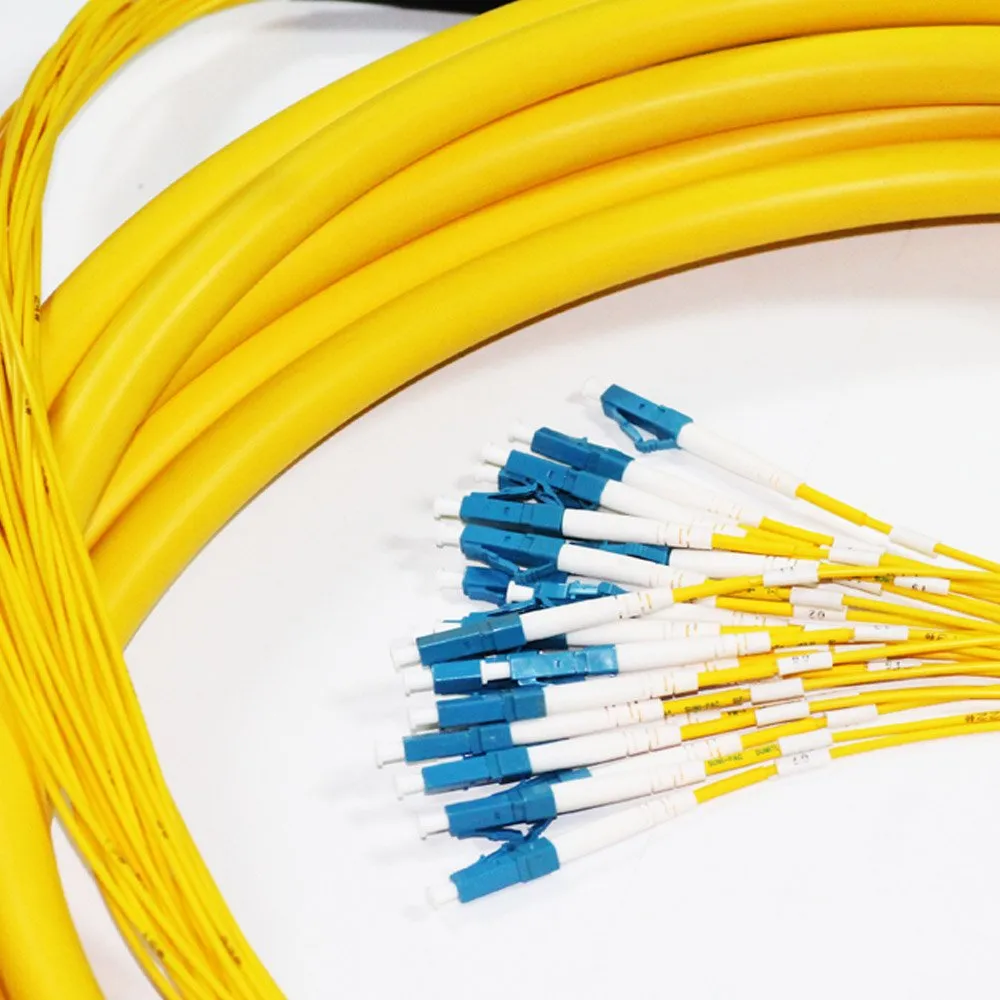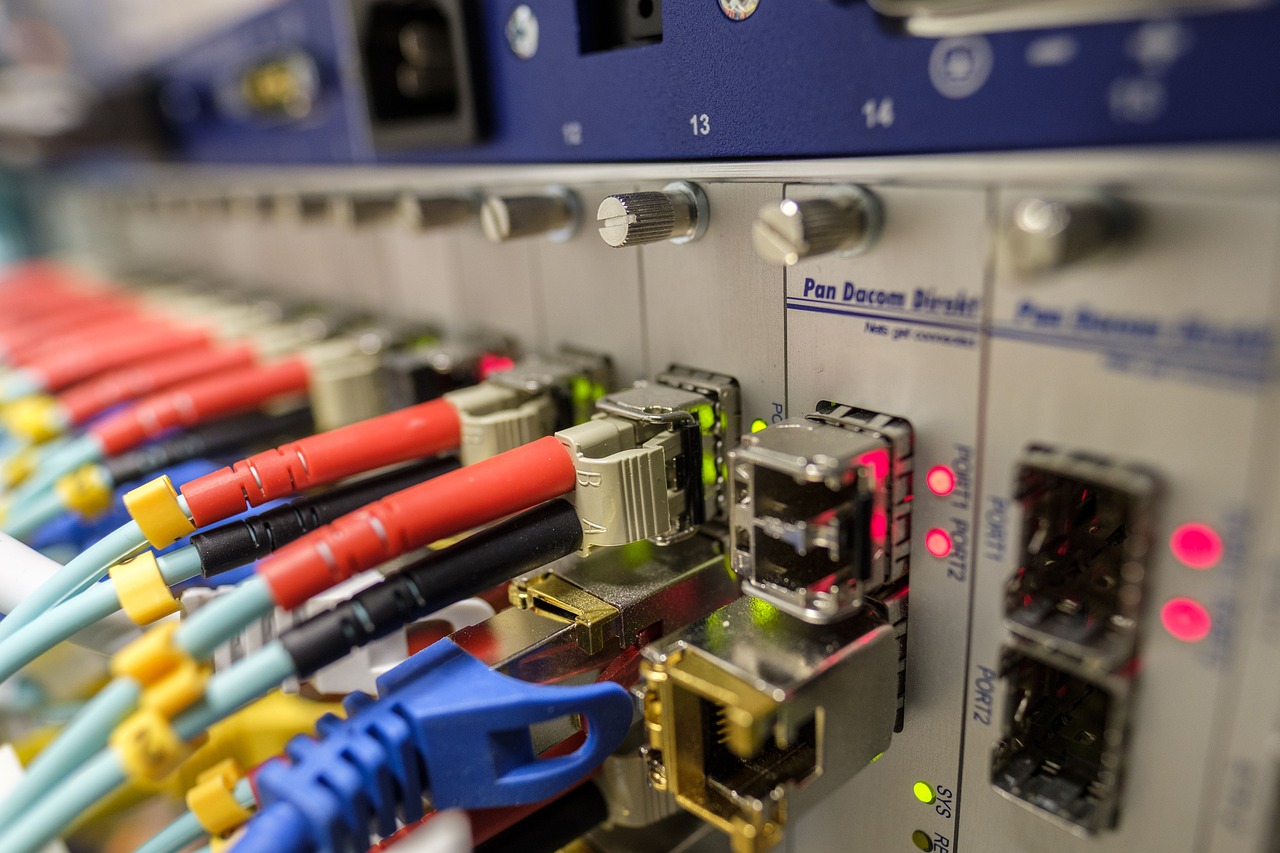The Latest Trends in 24 Cores Fiber Optic Patch Cable Applications in Telecommunications

The Evolution of Fiber Optic Technology in Telecommunications
Fiber optic technology has revolutionized the telecommunications industry, offering unparalleled speed and reliability. Fiber optic cables have replaced traditional copper wires, marking a significant shift in how data is transmitted.
From Copper to Fiber Optic: A Brief History
The transition from copper to fiber optic cables represents a pivotal moment in telecommunications history. Copper wires, although effective for their time, had limitations in terms of bandwidth and distance. The development of fiber optic cables addressed these shortcomings by utilizing light signals to transmit data, enabling faster and more efficient communication.
Milestones in Fiber Optic Technology
Over the years, there have been several milestones that have propelled fiber optic technology forward. These include advancements in cable design, signal amplification techniques, and the development of high-capacity transmission systems. Each milestone has contributed to the enhanced performance and widespread adoption of fiber optic technology.
The Importance of Fiber Optic in Modern Telecommunications
In today's digital age, fiber optic technology plays a crucial role in shaping modern telecommunications infrastructure.
The Role of Fiber Optic in High-Speed Internet
The demand for high-speed internet continues to escalate, driven by the increasing reliance on bandwidth-intensive applications and services. Fiber optic networks have emerged as the backbone of high-speed internet connectivity, delivering unparalleled speeds and bandwidth capacity to meet these escalating demands.
Fiber Optic's Impact on Global Connectivity
The global connectivity landscape has been transformed by the widespread deployment of fiber optic networks. These networks facilitate seamless international communication and enable real-time data transfer across continents. As a result, businesses, governments, and individuals can now connect and collaborate on a global scale with unprecedented ease.
Exploring the Role of 24 Cores Singlemode Fiber Optic Patch Cables
In the realm of telecommunications, Singlemode fiber optic cables are essential components that enable the seamless transmission of data over long distances.
Understanding Singlemode Fiber Optic Cables
Singlemode cables operate on the principle of allowing only a single mode of light to propagate. The science behind singlemode cables involves the use of a core with a much smaller diameter, which reduces the possibility of light reflection and dispersion. This design ensures that signals travel in a straight line, making singlemode cables ideal for long-distance communication where signal loss must be minimized.
Why are singlemode cables preferred for long-distance communication? The answer lies in their ability to maintain signal integrity over extended distances. By minimizing signal degradation, these cables can transmit data across vast geographical areas without compromising on speed or quality.
The Significance of 24 Cores in Patch Cables
The inclusion of 24 cores in fiber optic patch cables represents a significant advancement in telecommunications infrastructure.
Enhancing capacity and speed with more cores is a key advantage offered by 24 cores patch cables. With each core capable of carrying independent signals, the total capacity for data transmission is substantially increased. This enhanced capacity is particularly valuable in scenarios where large volumes of data need to be transmitted simultaneously, such as in high-traffic network environments or data centers.
The benefits of higher core count in telecommunications are multifaceted. Not only do they bolster overall network performance by accommodating greater data throughput, but they also provide scalability for future expansion. As bandwidth requirements continue to escalate, having a higher core count allows networks to adapt and grow without requiring extensive infrastructure upgrades.
The Advantages of Pre-terminated Fiber Optic Patch Cables
In the realm of telecommunications infrastructure, pre-terminated fiber optic patch cables offer distinct advantages that streamline network deployment and enhance overall performance.
What Makes Pre-terminated Cables Stand Out
The convenience of pre-terminated cables is unparalleled in the context of network installation and maintenance. These cables come with factory-terminated connectors, eliminating the need for on-site termination. As a result, installation time is significantly reduced, and the likelihood of errors during termination is minimized. This convenience not only expedites network deployment but also reduces labor costs associated with manual terminations.
The Role of Pre-terminated Cables in Telecommunications Infrastructure
Pre-terminated cables play a pivotal role in streamlining network deployment across various telecommunications environments. By offering plug-and-play functionality, these cables simplify the process of connecting network components, reducing the complexity of installation and configuration. Furthermore, their factory-precision terminations ensure consistent signal quality and reliability, ultimately contributing to enhanced network performance.
Real-World Applications of 24 Cores Fiber Optic Patch Cables
Enhancing Data Centers with High-Density Cabling
In the realm of data centers, the demand for high-density cabling solutions has surged in response to escalating data storage and access requirements. 24 cores fiber optic patch cables play a pivotal role in meeting these demands by offering enhanced capacity and streamlined connectivity.
Meeting the Demands of Modern Data Centers
Modern data centers operate within a dynamic landscape characterized by exponential data growth. As organizations strive to manage and process vast volumes of information, the need for efficient and high-capacity cabling solutions becomes paramount. 24 cores patch cables address this need by providing a dense yet scalable infrastructure that supports seamless data transmission across interconnected systems.
The Role of 24 Cores Cables in Data Storage and Access
The deployment of 24 cores fiber optic patch cables significantly enhances data storage and access capabilities within data centers. By accommodating higher core counts, these cables enable the rapid transfer of large datasets, bolstering overall operational efficiency. Furthermore, their compact design minimizes physical space requirements, allowing for optimized cable management and improved airflow within server racks.
The Future of Telecommunications and 24 Cores Fiber Optic Cables
As telecommunications continue to evolve, fiber optic patch cables with 24 cores are poised to shape the future of communication infrastructure.
Emerging Trends in Fiber Optic Telecommunications
The telecommunications industry is witnessing a shift towards higher bandwidth capacities and greater network resilience. This transition aligns with the capabilities offered by 24 cores fiber optic patch cables, positioning them as key enablers for next-generation networks. Additionally, advancements in cable manufacturing technologies are driving the development of even denser core configurations, paving the way for enhanced performance and scalability.
How 24 Cores Cables Are Shaping the Future of Communication
The adoption of 24 cores fiber optic patch cables represents a strategic investment in building robust communication frameworks capable of supporting evolving technological landscapes. These cables are instrumental in facilitating ultra-fast data transmission, empowering telecommunication networks to meet growing consumer demands for seamless connectivity and high-speed services.
See Also
Exploring Top-Notch Fiber Optic Trunk Cables for High-Speed Data
Becoming Proficient in Fiber Optic Communication: Applying Nylon Cables for FTTR
5 Bend-Insensitive Single Mode Fiber Optic Patch Cable Options: LC-LC Duplex, Various Core Diameters
4 Persuasive Advantages of Optical Cable in FTTR: Visible Fiber to the Room Setup


